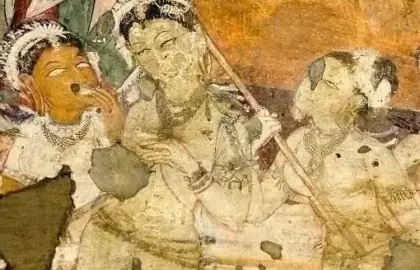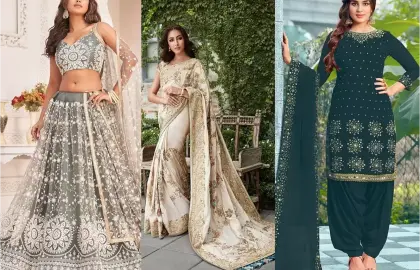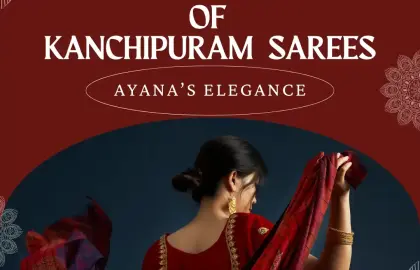A Comprehensive Guide to Different Types of Saris
The sari, a quintessential Indian attire, embodies cultural richness and diversity with its myriad styles and fabrics. Each type of sari carries its own history and craftsmanship, reflecting regional traditions and artistic finesse. Let's delve into the enchanting world of Indian saris and explore some of the most prominent varieties:

1. Kanchipuram Sari
Originating from Kanchipuram in Tamil Nadu, these saris are renowned for their luxurious silk fabric and intricate Zari patterns. Adorned with vibrant colors and elaborate motifs, Kanchipuram saris are cherished for weddings and festive occasions.
2. Banarasi Sari
Hailing from Varanasi (formerly Benares), Banarasi saris are celebrated for their opulent silk fabrics and handwoven Zari designs. These saris showcase exquisite brocade patterns and rich color combinations, symbolizing traditional Indian craftsmanship.
3. Chanderi Sari
Chanderi saris, originating from Chanderi in Madhya Pradesh, are known for their lightweight texture and sheer fabrics made from silk and cotton. These saris feature fine weaving patterns and are favored for their simplicity and elegance, ideal for summer wear and special events.
4. Bandhani Sari
Also known as Bandhej, Bandhani saris hail from Rajasthan and Gujarat. They are distinguished by their intricate tie-and-dye techniques, where the fabric is tied in specific patterns before dyeing. Bandhani saris are vibrant in color and adorned with unique patterns, making them popular for festive celebrations.
5. Tant Sari
Originating from West Bengal, Tant saris are known for their airy and comfortable cotton fabrics. These saris feature simple yet elegant designs, often woven with traditional motifs, and are preferred for their lightweight feel, making them suitable for daily wear.
6. Paithani Sari
Paithani saris, traditional to Maharashtra, feature rich silk fabrics and elaborate Pallu designs. These saris are adorned with intricate brocade patterns depicting motifs like peacocks and lotuses, showcasing the cultural heritage and artistry of Maharashtra.
7. Baluchari Sari
Baluchari saris originate from West Bengal and are distinguished by their intricate jacquard weaving techniques. These saris depict mythological scenes and nature motifs, showcasing fine craftsmanship and cultural narratives, ideal for special occasions and cultural gatherings.
8. Patola Sari
Hailing from Gujarat, Patola saris are renowned for their double Ikat weaving technique. The threads are tied and dyed before weaving to create intricate patterns. Patola saris are rare and exquisite, symbolizing impeccable craftsmanship and are treasured as heirloom pieces.
9. Sambalpuri Sari
Sambalpuri saris, from Odisha, are known for their traditional Bandhini and Ikat techniques. These saris feature vibrant colors and intricate geometric patterns, reflecting the rich cultural heritage of Odisha and are favored for their craftsmanship and artistic appeal.
10. Lehenga Sari
A modern interpretation, Lehenga saris combine the elegance of a sari with the convenience of a lehenga skirt. These saris are popular for weddings and festive events, offering the grace of a sari with the flair of a lehenga.
The sari is not just a garment but a cultural legacy that embodies India's rich heritage and craftsmanship. Each type of sari holds its own significance, representing regional traditions and artistic mastery. Explore the beauty and diversity of traditional Indian saris at Desi-Celeb, where you can enrich your collection with exquisite pieces that celebrate timeless elegance and cultural tradition.






